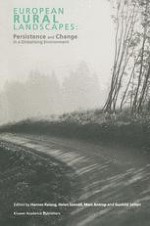2004 | OriginalPaper | Buchkapitel
The Significance of the Dutch Historical Gis Histland
The Example of the Mediaeval Peat Landscapes of Staphorst-Rouveen and Vriezenveen
verfasst von : Chris de Bont
Erschienen in: European Rural Landscapes: Persistence and Change in a Globalising Environment
Verlag: Springer Netherlands
Enthalten in: Professional Book Archive
Aktivieren Sie unsere intelligente Suche, um passende Fachinhalte oder Patente zu finden.
Wählen Sie Textabschnitte aus um mit Künstlicher Intelligenz passenden Patente zu finden. powered by
Markieren Sie Textabschnitte, um KI-gestützt weitere passende Inhalte zu finden. powered by
In the Netherlands, there is quite a long tradition of applied historical geography (Vervloet 1994), in which attempts are always made to find a balance between what is at times quick and dirty contract research on the one hand, and a more scientific approach on the other. the outcomes of investigations are reported in rather substantial quantities of text, which are always accompanied by detailed maps. Text and maps together give an idea of the reclamation and habitation history of the Netherlands, which, in the case of applied historical geography, is linked to relics found in the presentday landscape. Until recently, it was not always easy to transform 2000 years of Dutch occupation and habitation history into old-fashioned, hand-drawn maps. With the introduction of a multi-layered GIS system, this problem seems to be solved. the main question is to what extent GIS — and the Dutch historical GIS Histland in particular — is able to do justice to the complex and highly dynamic habitation history of many Dutch regions.
